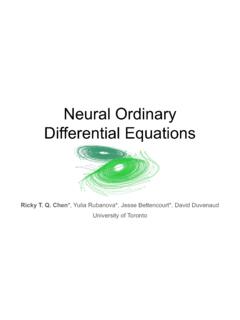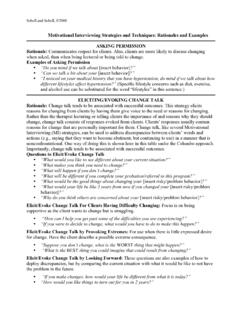Transcription of HairMapper: Removing Hair from Portraits Using GANs
1 HairMapper: Removing Hair from Portraits Using GANs Yiqian Wu1,2 Yong-Liang Yang3 Xiaogang Jin1,2 *. 1. State Key Lab of CAD&CG, Zhejiang University 2. ZJU-Tencent Game and Intelligent Graphics Innovation Technology Joint Lab 3. University of Bath (. a) (. b) (. c) (. d) (. e) (. f). Figure 1. Given portrait images with their faces partially occluded by hair (a), our method is able to generate Portraits without hair while preserving facial identity (b). After Removing the effects of hair, the resulting portrait images can be well employed in hair design by simply blending the clean face with some hairstyle templates (c and d) without the interference from existing hair.
2 Our results can also benefit 3D face reconstruction [12] by Using the clean face textures (e, f) generated by our method (rows 2 and 4) in contrast to the results of the original images (rows 1 and 3). Abstract by comparing it to state-of-the-art methods through exten- sive experiments and user studies. We also demonstrate its Removing hair from portrait images is challenging due applications in hair design and 3D face reconstruction. to the complex occlusions between hair and face, as well as the lack of paired portrait data with/without hair.
3 To this end, we present a dataset and a baseline method for 1. Introduction Removing hair from portrait images Using generative adver- sarial networks (GANs). Our core idea is to train a fully Hair is not only an important component of the human connected network HairM apper to find the direction of body, but also a key element of personality and fashion. hair removal in the latent space of StyleGAN for the train- However, the presence of hair in a portrait image poses sig- ing stage. We develop a new separation boundary and dif- nificant challenges for digital hair design and 3D face re- fuse method to generate paired training data for males, and construction.
4 Regarding hair design, a direct overlay of the a novel female-male-bald pipeline for paired data of fe- new hair can easily cause problems due to mixing up with males. Experiments show that our method can naturally the old hair, while replacing the old hair with the new hair deal with portrait images with variations on gender, age, requires error-prone matting and inpainting techniques [38]. etc. We validate the superior performance of our method For 3D face reconstruction, most existing methods cannot handle the hair in front of the face and it remains in the * Corresponding author.
5 Texture [10, 23], resulting in noticeable artifacts of the re- constructed face (see Fig. 1f). This motivates us to develop been exploring different generative models for portrait gen- a hair manipulation method that can naturally remove hair eration and editing. Progressively growing generator and from Portraits to facilitate such real applications. discriminator [17] can achieve high-resolution portrait im- Although image inpainting methods [24,25,39] can help ages. Freeform user input like freehand sketches [8, 9] and to generate or edit facial structure, they only allow manip- masks [14, 22] can also be used as conditions to generate ulating face semantic attributes at the image level.
6 Thanks realistic Portraits . StyleGAN [18 20] has a disentangled to the development of StyleGAN [19], the exploration in its latent space and can generate high-quality Portraits by ma- latent space [3, 29, 31, 36, 37] enables editing facial seman- nipulating different semantics. By projecting images into tics at the manifold level. However, none of these meth- the latent space of StyleGAN [1, 2, 30, 35], the input im- ods is able to remove hair while preserving facial identity age's semantic information can be embedded into a latent due to the following main challenges.
7 First, a dataset of code, thus the face editing task is transformed into simple paired Portraits with/without hair is not available. More- latent code manipulation. over, it is not easy to prepare such a dataset, especially for females. Second, besides the lack of ground truth of bald StyleGAN Latent Space Finding the general rule of la- woman , synthetic portrait generation based on StyleGAN tent code manipulation under the StyleGAN framework is is infeasible as bald woman is an invalid semantic combi- an effective way for portrait editing.
8 It can be regarded as nation. Third, hair removal is not a simple inpainting task, seeking a specific path in the StyleGAN latent space. Es- since the newly generated contents for the original hair re- tablishing a separation boundary in the latent space [31] al- gion should be compatible with the original face in terms of lows editing face semantics through a simple linear combi- skin color, shadow effect, etc. However, extreme light con- nation. However, the separation boundary may significantly ditions, shadows, and different hairstyles can easily cause change facial identity.
9 To address this problem, Coarse-to- imperfections given the variety of faces. Fine [36] further proposes a pipeline to refine the separa- To address the above challenges, we present a novel tion boundary, thus better preserving facial identity. The method that can effectively remove hair from Portraits while paths can also be learned by Principal Component Analysis preserving original face semantics and portrait quality, even or self-supervised approaches without annotation [15, 16]. for female Portraits with long and complex hair.
10 In the Instead of working in the StyleGAN latent space, the la- StyleGAN latent space, hair removal is not a simple linear tent semantic path can be discovered by directly decom- mapping problem. To find a specific hair manipulation path posing the pre-trained weights [32], or in a new space of and avoid expensive data annotation, we design two differ- channel-wise better-disentangled style parameters [37]. By ent pipelines to generate paired latent codes with/without adding or subtracting the standard deviation of a specific hair for males and females while keeping their facial iden- style channel, facial attributes like the amount of hair or tities.





